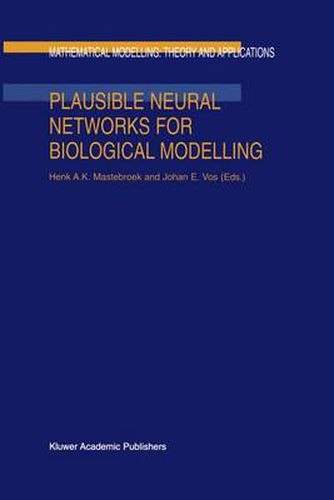Readings Newsletter
Become a Readings Member to make your shopping experience even easier.
Sign in or sign up for free!
You’re not far away from qualifying for FREE standard shipping within Australia
You’ve qualified for FREE standard shipping within Australia
The cart is loading…






This title is printed to order. This book may have been self-published. If so, we cannot guarantee the quality of the content. In the main most books will have gone through the editing process however some may not. We therefore suggest that you be aware of this before ordering this book. If in doubt check either the author or publisher’s details as we are unable to accept any returns unless they are faulty. Please contact us if you have any questions.
This title has the intention of returning the mathematical tools of neural networks to the biological realm of the nervous system, where they originated. It aims to introduce, in a didactic manner, two developments in neural network methodology, namely recurrence in the architecture and the use of spiking or integrate-and-fire neurons. In addition, the neuro-anatomical processes of synapse modification during development, training, and memory formation are discussed as realistic bases for weight-adjustment in neural networks. While neural networks have many applications outside biology, where it is irrelevant precisely which architecture and which algorithms are used, it is essential that there is a close relationship between the network’s properties and whatever is the case in a neuro-biological phenomenon that is being modelled or simulated in terms of a neural network. A recurrent architecture, the use of spiking neurons and appropriate weight update rules contribute to the plausibility of a neural network in such a case. Therefore, in the first half of this book the foundations are laid for the application of neural networks as models for the various biological phenomena that are treated in the second half of this book. These include various neural network models of sensory and motor control tasks that implement one or several of the requirements for biological plausibility.
$9.00 standard shipping within Australia
FREE standard shipping within Australia for orders over $100.00
Express & International shipping calculated at checkout
This title is printed to order. This book may have been self-published. If so, we cannot guarantee the quality of the content. In the main most books will have gone through the editing process however some may not. We therefore suggest that you be aware of this before ordering this book. If in doubt check either the author or publisher’s details as we are unable to accept any returns unless they are faulty. Please contact us if you have any questions.
This title has the intention of returning the mathematical tools of neural networks to the biological realm of the nervous system, where they originated. It aims to introduce, in a didactic manner, two developments in neural network methodology, namely recurrence in the architecture and the use of spiking or integrate-and-fire neurons. In addition, the neuro-anatomical processes of synapse modification during development, training, and memory formation are discussed as realistic bases for weight-adjustment in neural networks. While neural networks have many applications outside biology, where it is irrelevant precisely which architecture and which algorithms are used, it is essential that there is a close relationship between the network’s properties and whatever is the case in a neuro-biological phenomenon that is being modelled or simulated in terms of a neural network. A recurrent architecture, the use of spiking neurons and appropriate weight update rules contribute to the plausibility of a neural network in such a case. Therefore, in the first half of this book the foundations are laid for the application of neural networks as models for the various biological phenomena that are treated in the second half of this book. These include various neural network models of sensory and motor control tasks that implement one or several of the requirements for biological plausibility.